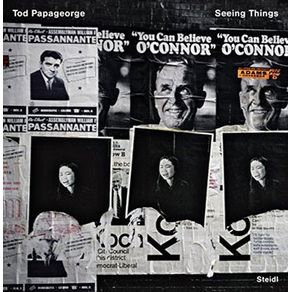Tod Papageorge: Seeing Things, New York 1966–1967 documents a brief but critical moment in the photographer's early career, the two years Papageorge shot in color in New York in the late 1960s. Black-and-white photography was still the "serious" medium, and color reserved for commercial applications; Papageorge--25 years old and newly arrived in New York City--was encouraged by his fellow photographers to seek paying magazine work by developing a body of work in color. In some ways it was a failed experiment: Papageorge mostly approached color in the same way as he approached black and white, except that he also began to intuitively produce still-life pictures with little commercial appeal, spotlighting canned hams in shop windows and political posters. But color offered Papageorge the opportunity to work in a new medium at a time of great social, political and cultural change. "I’d like to think that, in Seeing Things, New York 1966–1967, you’ll find a persuasive account of what it meant for me to be free with a Leica in the streets of my newly adopted home of Manhattan," writes Papageorge, "a record drawn with Kodachrome film and its rich, saturated colors."



